Posted by Elena del Valle on March 26, 2015

Buddy Valastro, host of Bakery Boss – click to enlarge
Video, photo: Discovery Familia
Interested in capturing the attention of women between 18 and 49 years of age Discovery Familia will air 13 one hour episodes, dubbed into Spanish, of Bakery Boss Mondays at 10 p.m. E/P starting March 30, 2015. The series, new to Discovery Familia, stars Buddy Valastro (Cake Boss) as he visits bakeries on the verge of bankruptcy around the country. Scroll down to watch a short video promotional clip in Spanish.
The show, produced by High Noon Entertainment, first aired in English on TLC in the United States in December 2013. It was filmed mostly in New York. Some filming also took place in Miami, Philadelphia, and Houston.
The show features the story of Pastry Is Art, a Miami bakery owned by Jenny, a Peruvian immigrant. She opened the businesses with her sister to discover work and family are not always a good match. In another episode, the host visits with Kristi, owner of Kristi G’s Cupcakes & More in Dallas. A former business executive, Kristi quit her job to open her own bakery, but business hasn’t been going so well, and she has serious problems with her employees, all relatives. According to promotional materials, in the stories showcased, Valastro listens to the owner’s problems, observes their operations, and advises the families on the best way toward financial success.
Valastro, a fourth generation baker born into the business owned and operated by his parents, grew up in New Jersey in an old fashioned Italian family. With the help of his family, Buddy grew Carlo’s Bakery, expanding outside of Hoboken for the first time. In 2013, Buddy and his family opened three new bakeries in New Jersey. He also opened his first restaurant, Buddy V’s, in the Venetian Las Vegas.
Part of Discovery Communications, Discovery Familia is a Spanish language network dedicated to “Hispanic women and the things they that matter in their lives.” Daytime programming is dedicated to children aged two to six. In the evening, the channel offers programming for women, focusing on home décor, food, health, beauty and parenting.
Posted by Elena del Valle on March 16, 2015
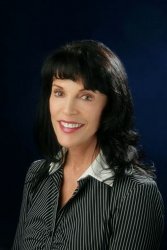
Lara Pizzorno, MDiv, lead author, Your Bones
Photo: Lara Pizzorno, MDiv
A podcast interview with Lara Pizzorno, MDiv, lead author, Your Bones, is available in the Podcast Section of Hispanic Marketing & Public Relations, HispanicMPR.com. During the podcast, she discusses how too many phosphates are killing us with Elena del Valle, host of the HispanicMPR.com podcast.
A member of the American Medical Writers Association for more than 25 years, Lara is the editor of Longevity Medicine Review, and senior medical editor for Salugenecists, Inc., and Integrative Medicine Advisors, LLC. She regularly writes review articles for physicians on issues related to healthy aging for Integrative Medicine: A Clinician’s Journal, covers the breaking research on bone health via video clips available on YouTube, and edits The World’s Healthiest Foods weekly newsletter.
A member of the American College of Nutrition, she is a contributing author to the Textbook of Functional Medicine and the Textbook of Natural Medicine; co-author of The Encyclopedia of Healing Foods, and lead author of Natural Medicine Instructions for Patients. Her book Your Bones: How You Can Prevent Osteoporosis & Have Strong Bones for Life, Naturally, was translated into German and Polish.
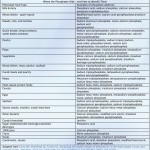
Phosphates Table courtesy of Lara Pizzorno – click to enlarge
To listen to the interview, scroll down until you see “Podcast” on the right hand side, then select “HMPR Lara Pizzorno, MDiv” and click on the play button below or download the MP3 file to your iPod or MP3 player to listen on the go, in your car or at home. To download it, click on the arrow of the recording you wish to copy and save it to disk. The podcast will remain listed in the March 2015 section of the podcast archive.
Posted by Elena del Valle on March 13, 2015
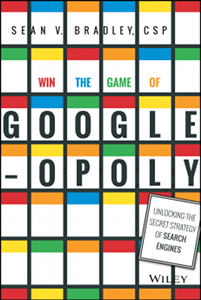
Win the Game of Googleopoly
Photos: Wiley, Bryan Taylor Johnson
Sean V. Bradley, CSP has made a career in automotive sales. When it comes to online sales he believes Google is king, dominating 67.5 percent of the market. He also believes it is essential to appear among the top ten results or the first page of results on Google. Because, he says, only five percent of people look at results beyond the first page, not being on that page is like not appearing at all.
He is convinced he has discovered search engine optimization techniques that will lead readers of his book Win the Game of Googleopoly: Unlocking the Secret Strategy of Search Engines (Wiley, $25) to Google success. The 249-page hardcover book published this year has 11 chapters where he outlines his SEO theories. The book directs readers to a book related website (it was down at the time this writing).

Sean Bradley, author, Win the Game of Googleopoly
Bradley is founder and chief executive officer of Dealer Synergy Inc. According to his bio, he has personally trained 10,000 automotive sales professionals, and has been hired by 1,000 multi-million dollar automotive dealerships.

Click to buy Win the Game of Googleopoly
Comments:
Filed Under: Books
Posted by Elena del Valle on March 6, 2015
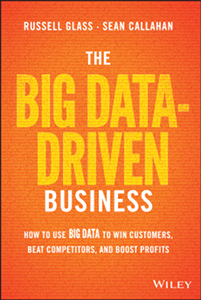
The Big Data-Driven Busines
Photos: Wiley
Marketers Russell Glass and Sean Callahan are big data fans. They believe big data “is changing and should change the way business functions.” They are convinced the benefits of data gathering and analysis are available to companies of all sizes and that every company is relying on them.

Sean Callahan, co-author, The Big Data Driven Business
In The Big Data-Driven Business: How to Use Big Data to Win Customers, Beat Competitors, and Boost Profits (Wiley, $30), a 214-page hardcover book published this year, they discuss the marketing advantages they believe it offers.
The book is divided into thirteen chapters in which the authors share the examples of Nate Silver, Copernicus, Apple and Blackberry to illustrate their point.

Russell Glass, co-author, The Big Data Driven Business
For the future they consider the following issues important: personalization, marketing measurement, mobile, Internet, privacy and security, product development, social media, content marketing and human intervention.
Callahan is a marketing journalist, and senior manager content marketing at LinkedIn. Glass is head of B2B Marketing Products at the same company.
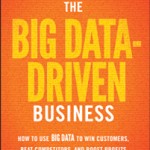
Click to buy The Big Data-Driven Business
Comments:
Filed Under: Books
Posted by Elena del Valle on February 27, 2015
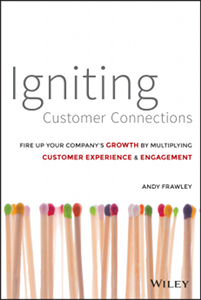
Igniting Customer Connections
Photos: Wiley
Andrew Frawley, president, Epsilon, has 30 years of marketing experience. He is convinced the old methods of marketing are behind us. He seeks to establish an emotional connection with customers and engage with them in “effective ways that achieve impressive repeatable results.”
Toward that goal he commissioned proprietary research.
The findings lead to what he calls Return on Experience x Engagement or ROE 2, an approach to produce profitable customer connections and measure marketing results. In Igniting Customer Connections: Fire Up Your Company’s Growth By Multiplying Customer Experience & Engagement by Frawley (Wiley, $28), published October 2014, he describes his ideas about marketing to build connections to match today’s technology and consumers.

Andy Frawley, author, Igniting Customer Connections
The 240-page hardcover book is divided into 21 chapters and three main sections. Part one, Connect with Your Customers Now, explains the approach and how it differs from the traditional return on investment concept. In ROE 2 Research and Insights he explains how it works, illustrating the research and interviews with executives. In An ROE 2 Primer, the third section, he discusses content, channels, measurement and segmentation, and technology as well as consumer privacy issues.
He believes marketers will require new analytical skills to take advantage of Big Data as the depth and breath of information expands. When it comes to consumer privacy, he suggests intelligent anonymity where a marketer has extensive information about a consumer without knowing who he or she is. He indicates in the book that best in class marketers don’t associate consumers’ individual information with cookies, and ensure consumer data remains only within the client’s possession. He proposes in Chapter 20 that marketers address consumer privacy with “transparency, knowledge, respect and responsibility.”
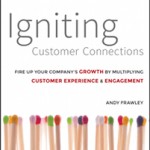
Click to buy Igniting Customer Connections
Comments:
Filed Under: Books
Posted by Elena del Valle on February 20, 2015

The Black Box Society
Photos: Harvard University Press
Every day, a corporate or government system gathers data, openly and in secret, about people across America. From purchasing habits to driving our lives and movements physical and virtual are increasingly subject to voyeurism, storage, sharing and analysis without our consent or knowledge. In The Black Box The Secret Algorithms That Control Money and Information (Harvard University Press, $31.50) Frank Pasquale, professor of law, University of Maryland, explores issues related to corporate data gathering, and asks who tracks the activities of the data gatherers, their own data; and what happens to the data they gather about us.
He points to the proprietary methods, gag rules and nondisclosure agreements government agents and corporations hide with, leaving everyone else exposed. Using anonymizing software, he says, may draw unwanted attention from authorities. The same laws that aggressively protect the data gatherers’ secrecy is “increasingly silent when it comes to the privacy of persons,” he says in the book.
“Many of the firms I write about in the book try very hard to keep their practices secret. I had to comb many reports in order to find another leaks, litigation documents, and other ‘peeks’ inside their black boxes,” said Pasquale when asked by email about the biggest challenge the book presented for him.
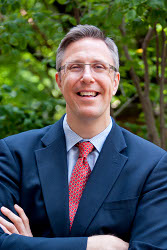
Frank Pasquale, author, The Black Box Society
“I have heard from so many people who’ve been victimized by black box processes,” he said, when asked what was the most unexpected result of writing and publishing the book. “There was a man who found his credit damaged for years, because he lost one small stage of a lawsuit against an obviously fraudulent actor. There are people who can’t find jobs because some mysterious algorithm or reporting system keeps blackballing them. But there are also many who fight back, and I really find inspiration from their stories.”
In the book, he asks: Should our own citizens be on secret watchlists without their knowledge or any opportunity to defend themselves? Should a credit card company be entitled to raise the interest rate of a couple seeking marriage counseling? Should they be told? Should powerful search engines and social media sites be entitled to take down legal websites and books without informing the public? Should the Federal Reserve print money to save banks after their executives behave irresponsibly, and hide the printing from the public?
The 304-page hardcover book, published this year, is divided into six chapters: Introduction—The Need to Know, Digital Reputation in an Era of Runaway Data, The Hidden Logics of Search, Finance’s Algorithms: The Emperor’s New Codes, Watching (and Improving) the Watcher, and Toward an Intelligible Society. It features 83 pages of end notes.
To the question of what the average person can do to protect her or himself until, and if, the situation is remedied, and the transparency you call for becomes a reality? he replied, “I’d say: support smaller, more local economic actors. At least there are people at them who can respond to complaints and try to fix things. I’ve found that, at many large firms, algorithmic processes truly become faceless…there’s no one to appeal to.”
In closing he says, the data gathering situation and society with a black box approach “has become dangerously unstable, unfair and unproductive;” and that it is up to society to establish the rules that lead us to a safe environment and a stable economy. Pasquale is an affiliate fellow at Yale Law School’s Information Society Project, and a member of the Council for Big Data, Ethics, and Society.

Click to buy The Black Box Society
Comments:
Filed Under: Books
Posted by Elena del Valle on February 11, 2015
April Davis
Founder
Cupid’s Cronies

April Davis, founder, Cupid’s Cronies
Photo: Cupid’s Cronies
Being a successful businessperson and being a successful dater may seem completely unrelated. However, many of the skills and techniques used in dating can be applied to a business context. As a dating coach, I provide our clients with various tips on building a relationship, conversing, and making connections, just a few of the tips that can overlap with the business world. Here are five examples.
Conversation and communication skills
We’ve all been in meetings when afterwards you talk later and it’s clear you heard different messages. Similarly, two people can go on a date and when they follow up with me, I hear two distinctly different versions of the event.
In order to have a good meeting or a good date, one needs to have great communication skills. If they’re awkward in their delivery or lack decent grammar, they’re going to be quickly written off and disregarded.
Click to read the entire article Business tips from a dating coach
Posted by Elena del Valle on February 4, 2015
By Danixa Lopez
Senior account executive
Santa Cruz Communications

Danixa Lopez, senior account executive, Santa Cruz Communications
Photo: Santa Cruz Communications
I recently performed a Google search for the keyword phrase of Public Relations for the Hispanic Market and more than 1.5 million results were produced. With so many options, how can public relations and marketing agencies that offer services tailored to the Hispanic market differentiate themselves?
There is no correct answer. When it comes to marketing to Hispanics, each public relations professional has his/her own experience and strengths that can help when developing and executing a media relations plan. There is a myriad of proven strategies and tactics that you can use. However, no matter which ones you choose, there are some basic practices that will help you and your team obtain the best results.
Click to read the entire article Five proven practices to obtain the best results out of your media relations plan
Posted by Elena del Valle on January 26, 2015
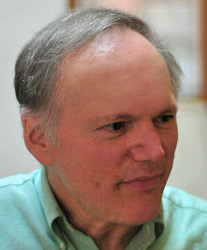
Laurence Shatkin, Ph.D., author, Your Guide to High-Paying Careers
Photo: Laurence Shatkin
A podcast interview with Laurence Shatkin, Ph.D., author, Your Guide to High-Paying Careers, is available in the Podcast Section of Hispanic Marketing & Public Relations, HispanicMPR.com. During the podcast, he discusses high paying careers with Elena del Valle, host of the HispanicMPR.com podcast.
Laurence has been a writer and researcher in the field of career information for 35 years. He was one of the developers of the SIGI PLUS (System of Interactive Guidance and Information) career information system at Educational Testing Service, and he has developed and adapted similar systems for use in the United States, Australia, Saudi Arabia, and the United Arab Emirates. He is the author or co-author of more than two dozen books about careers. He lives in Titusville, New Jersey.
To listen to the interview, scroll down until you see “Podcast” on the right hand side, then select “HMPR Laurence Shatkin, Ph.D.” and click on the play button below or download the MP3 file to your iPod or MP3 player to listen on the go, in your car or at home. To download it, click on the arrow of the recording you wish to copy and save it to disk. The podcast will remain listed in the January 2015 section of the podcast archive.
Posted by Elena del Valle on January 23, 2015
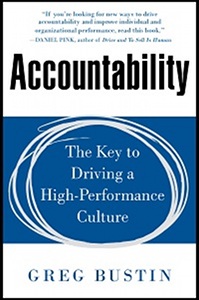
Accountability
Photos: Bustin & Co
If accountability is “Doing what you said you would do within the time frame you agreed to do it*” and only a tiny fraction of management executives surveyed believed their companies did a good job executing their strategic plan, what does that say about the accountability at their companies? Greg Bustin, author, Accountability: The Key to Driving a High-Performance Culture (McGraw-Hill, $28) believes accountability is the greatest challenge businesses face.
In his 293-page hardcover book, published in 2014, he discusses the role of accountability in the business environment. The book is divided into ten chapters and an appendix.
Establishing clear expectations, dealing with problems immediately and leaving emotions behind are important steps when a leader holds others accountable, he says.

Greg Bustin, author, Accountability
He goes on to recommend that the way to accountability begins with a purpose. Once executives identify what they want to do, what they can do and what they’re willing to do, they can hold themselves accountable. Only then can they create a culture where accountability drives performance and hold others accountable. He defines seven characteristics he believes are necessary for efficient accountability: character, unity, learning, tracking, urgency, reputation and evolving.
Bustin, chief executive officer, Bustin & Co., is a Dallas based business and leadership consultant. Prior to this book, he wrote Take Charge!, Lead the Way, and That’s a Great Question.
*From Accountability.
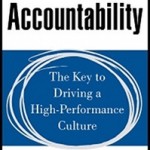
Click to buy Accountability
Comments:
Filed Under: Books































